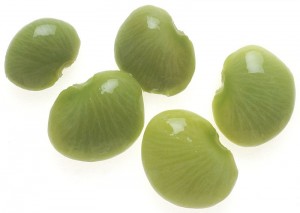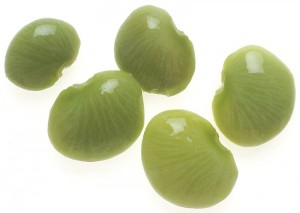 This is a simple experiment that really shows the relationship of mass, volume, and density. You don't need anything fancy, just a piece of bread. If you do have a scale that can measure small masses (like a kitchen scale), bring it out, but it is not essential.
This is a simple experiment that really shows the relationship of mass, volume, and density. You don't need anything fancy, just a piece of bread. If you do have a scale that can measure small masses (like a kitchen scale), bring it out, but it is not essential.Here's what you do: Please login or register to read the rest of this content.


eso fue asombroso. ¡Aprendió mucho!
By test, I think you mean measure… is that right? If so, then read on. Here’s a lab worksheet I used recently with my class of 4-6th grade students that I think will help with your question. I gave the kids a large, lightweight rock, but you can do this experiment with any solid.
Measuring Density:
We’re going to measure the density of the pumice rock. Density is a measure of how heavy something is for its size. Foam is not very dense compared to a typical rock, meaning that if you had a rock and a piece of foam exactly the same size, you’d expect the rock to weigh more. However, this rock is lighter than usual. Let’s find out how dense it is. Here’s how you do it:
1. Weight the rock using a scale. Make sure you are measuring in grams, and record your weight here:
Mass = ___________________________________ grams
2. Record the water level in milliliters (mL). You can add more water if you need to to bring it up to a number that’s easier to read.
Water level = _______________________________ mL
3. Place the pumice sample in the water and record the new water height. Make sure the rock is completely submerged. Use a fingertip to push it completely underwater if you need to.
New water level = _______________________________ mL
4. What is the difference in the water levels? You can use a calculator.
Water level difference = _______________________________ mL
5. Now use the calculator to divide the mass by the water level difference. This is your density.
Density = mass ÷ water level difference = _________________________________________________________ (units?)
6. Is pumice lighter or heavier than water? ______________________________________________
The density of water is 1 g/mL. The specific gravity (also called the “s.g.” or “SG”) of a mineral or rock is how we compare the weight of the sample with the weight of an equal volume of water. Low specific gravity substances, like pumice (0.9), are not very dense. High specific gravity substances, like for gold (19.3), are very dense. If the specific gravity is less than 1, it will float on water.
query…. so how can you test the density.
you can tell me that you squished it (and I can do so) and visibly it looks squished. But how do you actually TEST the density of it?
I can test density in floating liquids. how do I test density in a solid?
You’re asking about the different between density and mass, right? Mass is the number of atoms that something is made up of. If you tore a chunk off the bread but fluffed it back out to take up the same amount of space, then you’d be decreasing the mass. If you squeeze the same amount of bread into a smaller space, you keep the mass the same but are changing the density, which is mass per unit of volume.
By the way, a scale measures weight, not mass, but for this experiment it works just fine. Think about this: if you took that scale and laid it on the moon, would you expect the scale to read a higher or lower number than when it’s on Earth? Since you’re not taking your bread to the moon, using a scale works for this experiment. 🙂 Does that help?
Hello Aurora,
We just tried the bread density experiment and observed the same result be for and after the bread was squished…which was 50 g. Does it matter the type of bread use?. We know that our scale is working because we are able to measure a variety items getting differing weights.
Tania
Did you have a problem with the experiment that I can help with? And I am not sure if you’re referring to another experiment with “crystal pictures”? 🙂 Let me know if I can assist.
ridiculous!
we couldn’t get crystal pics
IT WAS FUN A LOT A LOT A LOT!!!!!!!!!!!!!!!!!!!!!!!! ZACHARY =)
Like in outer space?
what would something look like with no space?
sort of funny but our bread didn’t really go into a ball.
=)
sevy keble